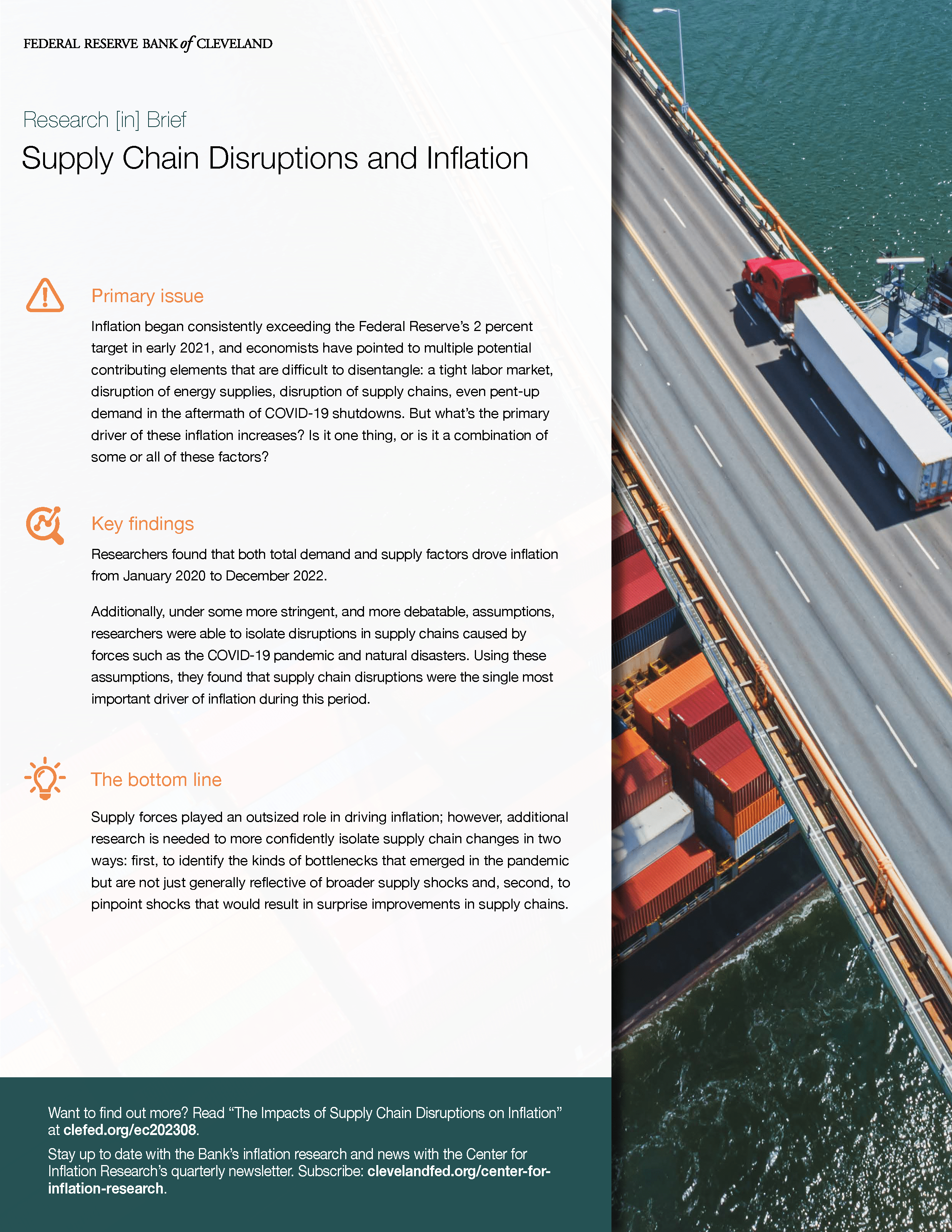- Share
Supply Chain Disruptions and Inflation
Infographic

Full text
Primary issue
Inflation began consistently exceeding the Federal Reserve’s 2 percent target in early 2021, and economists have pointed to multiple potential contributing elements that are difficult to disentangle: a tight labor market, disruption of energy supplies, disruption of supply chains, even pent-up demand in the aftermath of COVID-19 shutdowns. But what’s the primary driver of these inflation increases? Is it one thing, or is it a combination of some or all of these factors?
Key findings
Researchers found that both total demand and supply factors drove inflation from January 2020 to December 2022.
Additionally, under some more stringent, and more debatable, assumptions, researchers were able to isolate disruptions in supply chains caused by forces such as the COVID-19 pandemic and natural disasters. Using these assumptions, they found that supply chain disruptions were the single most important driver of inflation during this period.
The bottom line
Supply forces played an outsized role in driving inflation; however, additional research is needed to more confidently isolate supply chain changes in two ways: first, to identify the kinds of bottlenecks that emerged in the pandemic but are not just generally reflective of broader supply shocks and, second, to pinpoint shocks that would result in surprise improvements in supply chains.
Want to find out more? Read “The Impacts of Supply Chain Disruptions on Inflation” at clefed.org/ec202308.
Stay up to date with the Bank’s inflation research and news with the Center for Inflation Research’s quarterly newsletter. Subscribe: clevelandfed.org/center-for-inflation-research.

